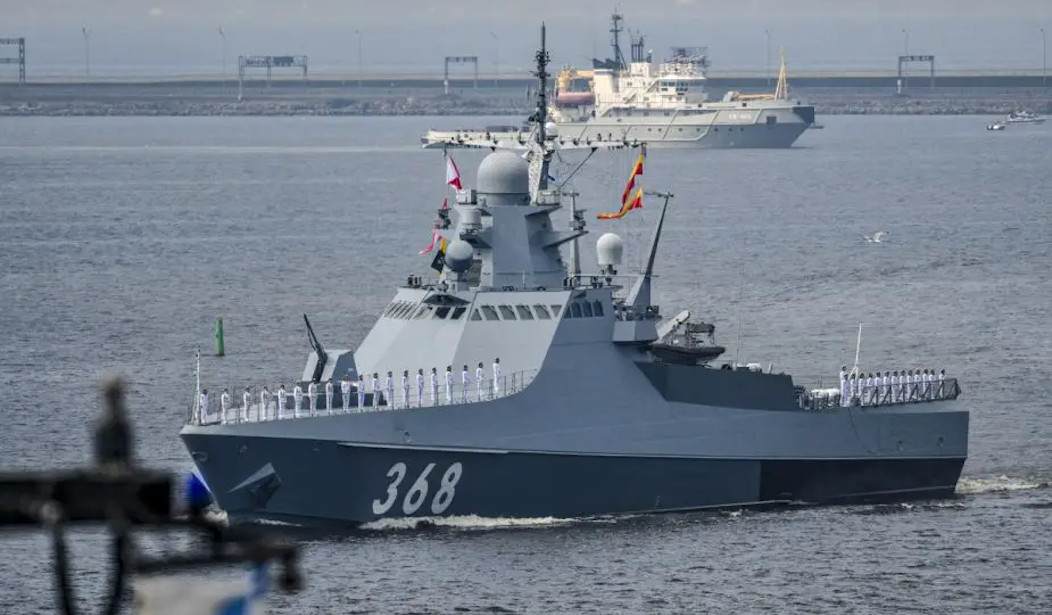
L: Iranian defense minister Aziz Nasirzadeh; R: Russian defense minister Andrey Belousov / edited from Wikimedia
| Published July 26, 2025
State-run press indicated that the Islamic Republic is worried about the prospect of a second round of U.S. or Israeli strikes after the successful operation to take out Tehran’s nuclear program
In a bold and calculated show of force, Russia and Iran have launched joint military drills in the Caspian Sea, a move that analysts see as a direct warning to the United States. The exercises, involving advanced warships, helicopters, and naval commandos, underscore the growing strategic partnership between Moscow and Tehran—and their shared defiance of Western influence in the region.
According to Iranian state media, the joint drills were deliberately staged to send “a clear message to the United States.” Iranian naval commander Admiral Mostafa Tajaddini confirmed the deployment of combat units, including special forces and airborne elements, in what he described as a demonstration of “regional power and coordination.” Russia’s participation signals its intent to deepen alliances outside NATO while tensions with the West continue to escalate over Ukraine, sanctions, and shifting global alignments.
The Caspian Sea, though often overlooked in global headlines, holds immense geopolitical importance. It borders five nations—Russia, Iran, Kazakhstan, Turkmenistan, and Azerbaijan—and is a key transit route for energy exports. By conducting drills there, Iran and Russia aim not just to showcase naval strength but also to assert control over a region critical to both Eastern energy corridors and Western containment strategies.
Critics argue this move highlights a growing pattern of boldness from U.S. adversaries amid what many view as a vacuum of strong American leadership on the world stage. The timing is telling: with the United States preoccupied by global and domestic challenges, Moscow and Tehran appear increasingly confident that provocative moves will go unchallenged.
While Washington has yet to issue a formal response, national security experts caution that dismissing these maneuvers would be unwise. These are not isolated gestures—they reflect a broader effort by rival powers to coordinate and confront American influence.
Iran’s military cooperation with Russia, especially in the wake of drone support for the war in Ukraine, reinforces a dangerous new dynamic. The United States and its allies now face a more synchronized challenge—militarily, politically, and strategically.
The question remains: will U.S. policymakers treat this as a wake-up call—or let it pass as just another headline?
 CREDIT: Russian Ministry of Defense
CREDIT: Russian Ministry of Defense
 Implications:
Implications:
-
Strengthening of Anti-U.S. Alliances
The joint drills underscore a growing military partnership between Russia and Iran—two regimes openly hostile to U.S. interests—signaling a more coordinated front against Western influence. -
Test of American Resolve
Conducting these drills publicly sends a deliberate message to the U.S., challenging Washington’s willingness—and ability—to respond to global threats with strength. -
Shift Toward a Multipolar World Order
As Russia and Iran consolidate power, they contribute to the weakening of U.S.-led global leadership and embolden other authoritarian regimes to challenge American dominance. -
Destabilization of a Strategic Region
The Caspian Sea is vital for energy and security interests. Joint military exercises there raise the risk of instability in a region critical to both European and Asian energy flows. -
Normalization of Hostile Posturing
The lack of a strong Western response could normalize military provocations, lowering the threshold for future aggression in other hotspots like the Persian Gulf, Black Sea, or even the Pacific. -
Undermining of U.S. Deterrence
These actions reflect a broader perception that the U.S. no longer commands respect or fear from adversaries, inviting further escalations on other fronts—military, economic, and cyber. -
Potential Military Technology Sharing
Deepening military ties may lead to increased tech and intelligence sharing between Russia and Iran, enhancing both nations’ battlefield capabilities and threatening U.S. allies. -
Impact on Israel and Gulf Allies
A stronger Iran, emboldened by Russian support, poses an increased threat to Israel and Gulf nations—further complicating U.S. commitments to regional stability and defense.
 Overall Takeaway:
Overall Takeaway:
Russia and Iran’s joint war drills are not just symbolic—they’re a direct challenge to American strength and credibility. While our adversaries form military alliances and flex their power, the current U.S. leadership appears more focused on diplomacy through appeasement than on deterrence through strength. This growing axis of anti-American regimes is capitalizing on weak foreign policy and projecting force where they know they won’t be confronted. Without a serious shift in strategy, the United States risks losing its grip on global leadership—and inviting even more aggression from those who no longer fear consequences.
SOURCES: REDSTATE – Play Stupid Games, Win Stupid Prizes? Russia and Iran Conduct Joint War Drills to ‘Send Message to US’
THE WASHINGTON FREE BEACON – Iran and Russia Conduct War Drills ‘In Order to Send a Message to the United States,’ Iranian Media Report





Be the first to comment